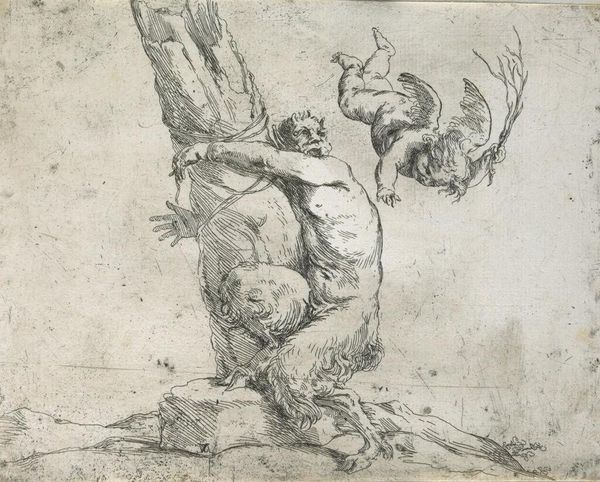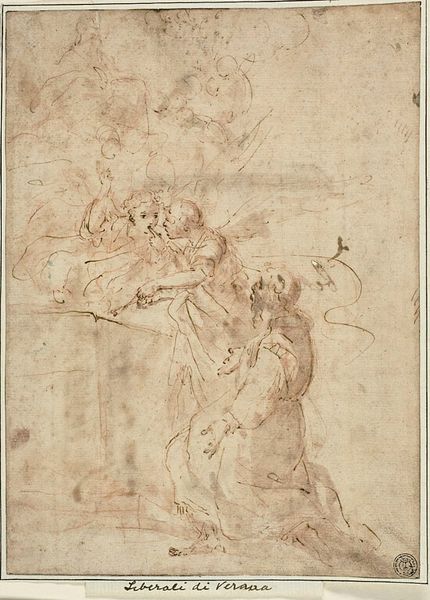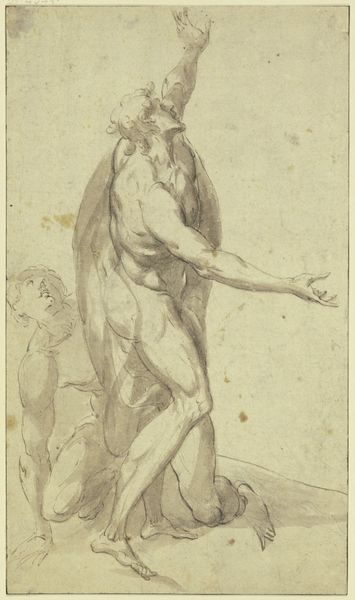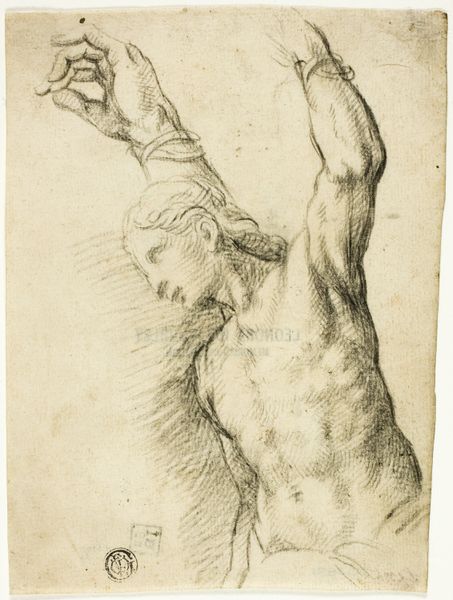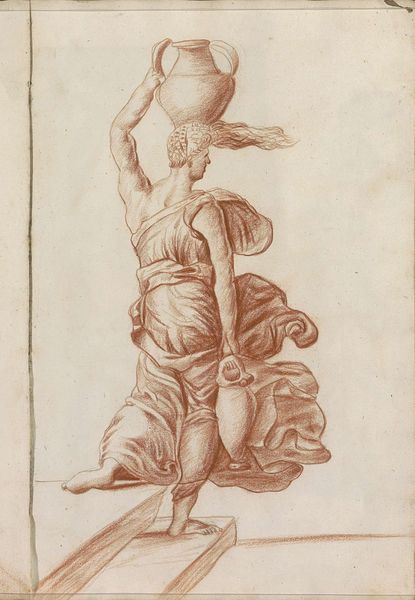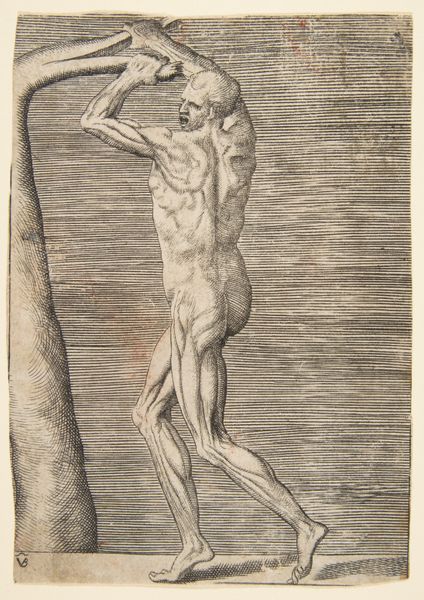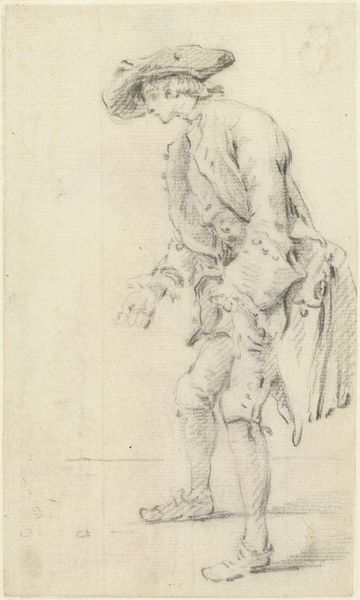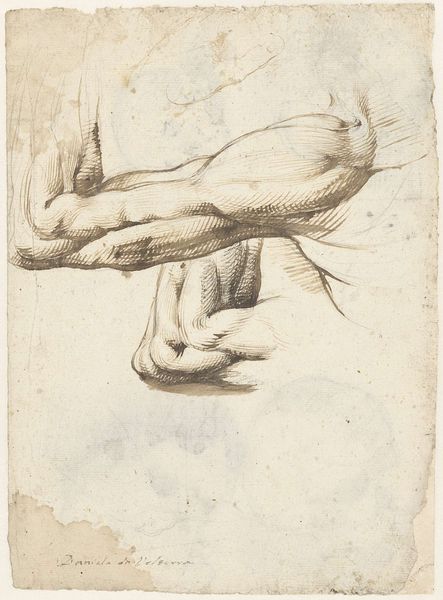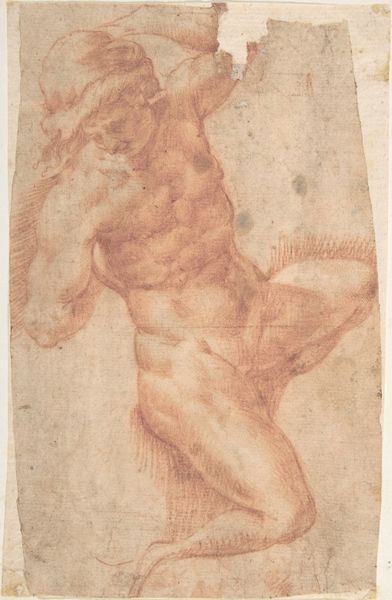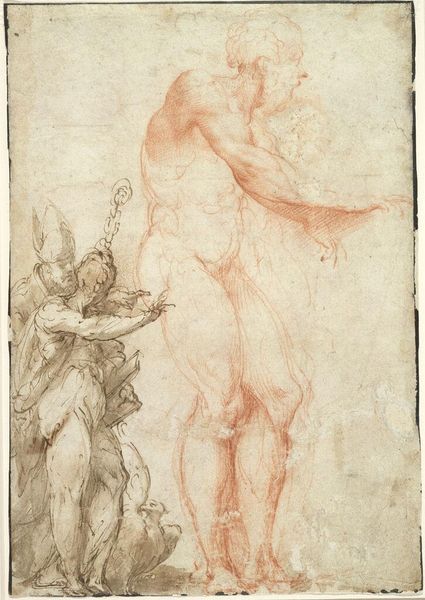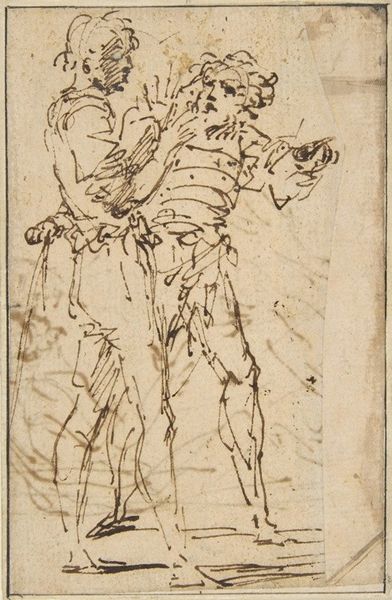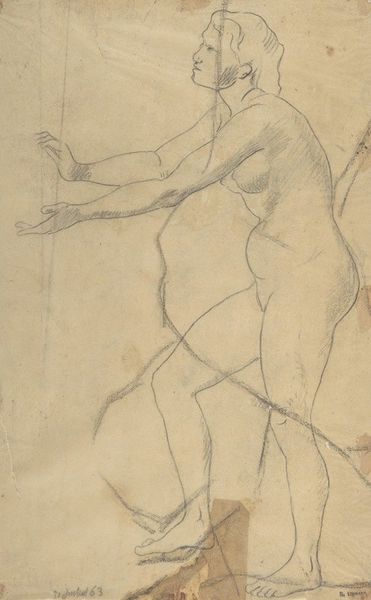
drawing, dry-media, charcoal
#
drawing
#
baroque
#
charcoal drawing
#
figuration
#
dry-media
#
charcoal
#
history-painting
#
nude
Copyright: Public Domain: Artvee
Curator: Well, that's arresting. The way he’s slung against the tree, all angular lines and that pleading hand...it's visceral. Editor: Indeed. Here we have Jusepe de Ribera's drawing, "St. Sebastian," likely created between 1626 and 1630. Ribera, a key figure in the Spanish Baroque, frequently depicted religious subjects with striking realism. It’s rendered in charcoal. Look closely; you can practically feel the texture of the paper itself. Curator: Texture absolutely dominates here. The weave of the cloth around his waist, the rough bark—you feel like you could run your fingers across it. The contrast between the roughly sketched background and the tighter rendering of the body, especially that strained musculature...It speaks of the physical act of creation. Was this intended as a study? Editor: Quite possibly. The level of detail certainly suggests that. Ribera and his workshop often made preparatory drawings to try out new artistic directions and to refine the composition of paintings. Think of this one, its subsequent critical reception and market value is inseparable from the way devotional imagery cemented religious dogma in early modern Spain. Curator: Right, but focusing just on this singular sheet of paper for a second, this study tells its own kind of story, too, right? Look at the pressure he exerted with the charcoal. There's so much drama simply in how the materials were manipulated. Did he use various charcoals for depth? Were the paper sizes carefully chosen in the workshops? All questions raised, which impact how the viewer understands this particular work. Editor: Certainly! His dramatic use of chiaroscuro wasn't simply aesthetic, you see, it’s tied into the spiritual drama the Baroque era sought to embody, so how it circulated as a religious object among lay audiences is key. The arrows, barely suggested, almost seem secondary. This drawing exemplifies the era’s heightened theatricality, mirroring stagecraft in painting with pronounced staging, if you will, and its intense focus on emotion, it aims to instill faith through visceral experience. Curator: Agreed. And it does achieve that visceral quality – no artifice, but through careful choices and sheer labor to reveal and build form from raw material. Well, seeing this makes me consider just how involved studio work could be for great masters! Editor: It provides much to contemplate about the history of the work. And I am fascinated to know its role and reception across Europe then and today.
Comments
No comments
Be the first to comment and join the conversation on the ultimate creative platform.
